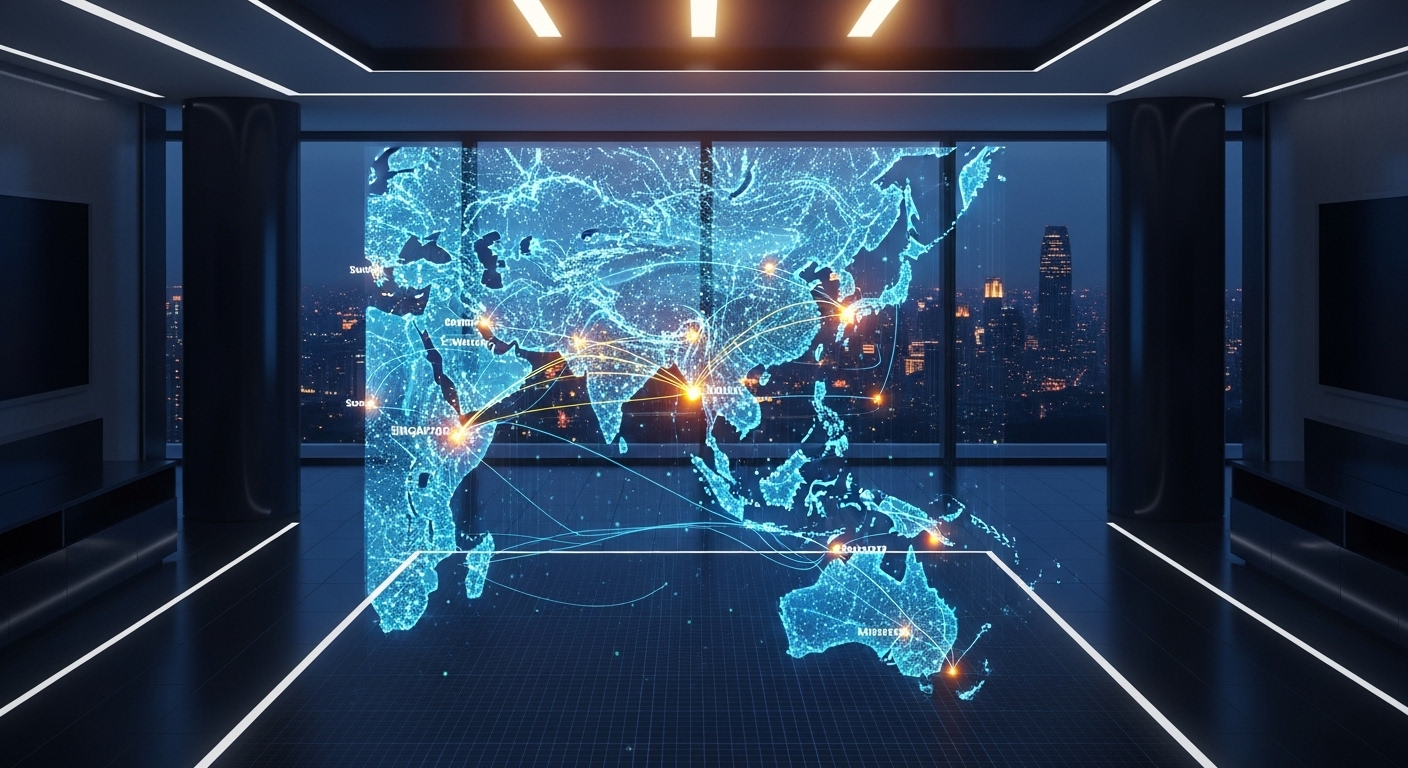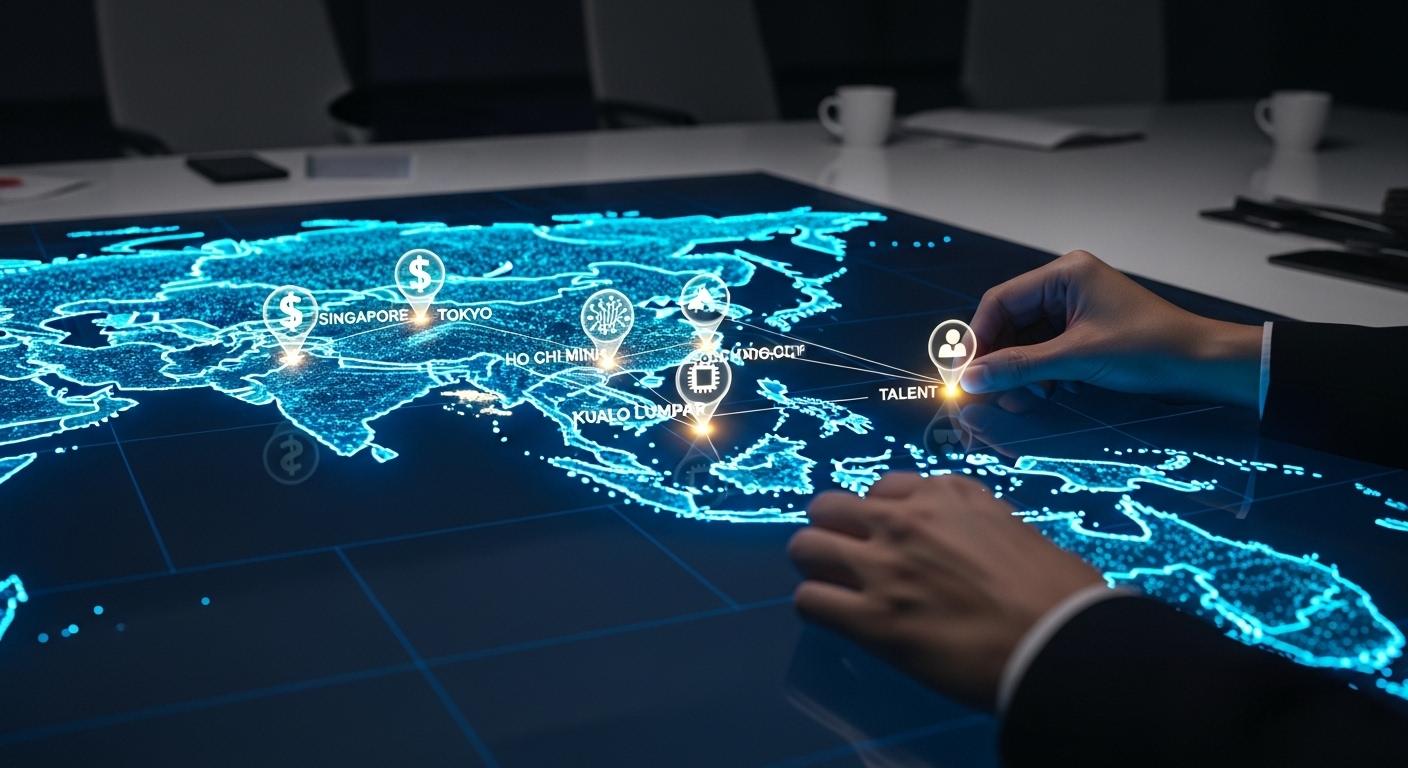The traditional map of business in the Asia-Pacific region was once easy to read, dominated by a few titans like Tokyo, Hong Kong, and Singapore. These cities served as undeniable gateways for capital, talent, and trade. However, powerful undercurrents of digital transformation, supply chain diversification, and shifting geopolitical landscapes have fractured this monolith. Today, a new, more complex and dynamic picture is emerging: an intricate mosaic of interconnected hubs, each with a unique economic specialization and growth trajectory. Understanding this new economic geography is no longer just an academic exercise; it’s a critical strategic imperative for any global business looking to thrive in the world’s most dynamic region. This guide moves beyond the outdated narratives to provide a framework for navigating the rise of challenger cities, the consolidation of specialized industry nexuses, and the digital infrastructure binding them together. We will explore how to build a resilient, multi-hub strategy that leverages the distinct strengths of this vibrant and evolving mosaic.
Beyond the titans: Deconstructing the traditional APAC power structure
For decades, the Asia-Pacific’s economic narrative was authored in the boardrooms of Tokyo, the trading floors of Hong Kong, and the regional headquarters of Singapore. These cities built formidable reputations as pillars of global finance, logistics, and corporate governance. Tokyo, with its deep capital markets and legacy of industrial innovation, remains a heavyweight. Hong Kong has historically served as the unparalleled bridge between mainland China and the global economy. Singapore masterfully engineered its environment to become a stable, efficient, and technologically advanced hub for multinational corporations. Their influence is undeniable and continues to be a major factor in regional strategy. However, the very success that cemented their status has also created new challenges. Rising operational costs, market saturation in certain sectors, and evolving geopolitical tensions are prompting businesses to re-evaluate the wisdom of concentrating all their regional assets in one or two locations. This isn’t a story of decline, but one of evolution. The titans are not being replaced; their roles are being redefined within a broader, more distributed network. They are becoming premium, high-value nodes for functions like finance and strategic oversight, while other critical business operations find more efficient and dynamic homes elsewhere in the region’s expanding mosaic.
The rise of the challenger hubs: Southeast Asia’s new dynamos
While the titans recalibrate, a new class of dynamic urban centers is rapidly ascending, particularly within Southeast Asia. Cities like Jakarta, Ho Chi Minh City, and Kuala Lumpur are no longer just peripheral manufacturing outposts; they are becoming vibrant economic hubs in their own right, fueled by powerful demographic tailwinds. With vast, young, and increasingly urbanized populations, these cities offer a glimpse into the future of consumer markets and labor pools. Jakarta, the heart of Indonesia’s booming digital economy, has become a hotbed for fintech and e-commerce innovation, attracting significant venture capital. Ho Chi Minh City in Vietnam is leveraging its manufacturing prowess to climb the value chain, emerging as a key hub for tech outsourcing and R&D for global electronics giants. Meanwhile, Kuala Lumpur offers a compelling blend of modern infrastructure, a multicultural talent pool, and cost-effectiveness, making it an attractive base for regional service centers. These challenger hubs are aggressively courting foreign investment with streamlined regulations and infrastructure development, creating fertile ground for businesses seeking growth, scale, and a direct line to the next billion consumers. They represent the new centers of gravity for operational execution, production, and market expansion in the APAC region.
India’s tech corridors: From Bangalore to Hyderabad
No discussion of the APAC mosaic is complete without a deep dive into India’s formidable tech corridors. While Bangalore, the original ‘Silicon Valley of India,’ remains a global epicenter for IT services, R&D, and a thriving startup ecosystem, the narrative of Indian tech is now far richer and more geographically diverse. Cities like Hyderabad and Pune have emerged as powerful specialized hubs, creating a multi-nodal network of innovation. Hyderabad has successfully cultivated a world-class ecosystem for pharmaceuticals, biotechnology, and, more recently, the gaming and animation industries. Its strategic focus on infrastructure, including the massive Genome Valley and HITEC City, has attracted global giants. Pune has carved out a niche in automotive engineering, manufacturing, and enterprise IT, benefiting from its proximity to Mumbai’s financial center while maintaining a distinct identity. The true strength of these corridors lies in the sheer depth and scale of their engineering talent. India’s universities produce millions of STEM graduates annually, providing the human capital necessary to power complex R&D projects and large-scale digital transformation initiatives for companies worldwide. For businesses focused on technology, software development, and deep-tech research, these Indian cities are not just outsourcing destinations but integral partners in global innovation.
The specialized nexus: Finding your industry’s center of gravity
A key feature of the new APAC economic geography is the rise of highly specialized hubs, where a critical mass of talent, capital, and infrastructure coalesces around a specific industry. A one-size-fits-all approach to location strategy is now obsolete; success depends on identifying and plugging into the right nexus for your sector. For instance, Seoul has transformed into the undisputed global capital of consumer technology and digital entertainment, driven by the phenomenal success of K-pop, gaming, and tech giants like Samsung. Companies in the creative and consumer electronics industries find an unparalleled ecosystem there. To the south, Shenzhen has cemented its reputation as the world’s hardware capital, offering an entire ecosystem for prototyping, manufacturing, and supply chain management at a speed and scale unmatched anywhere else. In Taiwan, Taipei and its surrounding science parks remain the command center of the global semiconductor industry, a critical node for any business involved in advanced electronics. And across the sea, Sydney has solidified its position as the premier hub for fintech, financial services, and legal expertise for the broader Oceania region. Navigating the mosaic means understanding these specializations and strategically placing different business functions in the cities that offer the most significant competitive advantage for that specific role.
Connectivity and infrastructure: The digital and physical arteries of the mosaic
The entire Asia-Pacific mosaic is held together by an increasingly dense and sophisticated web of digital and physical infrastructure. This connectivity is the essential enabler of the multi-hub strategy, allowing companies to operate seamlessly across geographically dispersed locations. On the digital front, the region is witnessing massive investment in 5G networks, hyperscale data centers, and new subsea fiber optic cables. This robust digital backbone reduces latency and increases bandwidth, making it feasible for a team in Bangalore to collaborate in real-time with teams in Singapore and Seoul. This high-speed connectivity is the foundation of a truly integrated regional operation, not just a collection of siloed offices. Physically, infrastructure development is keeping pace. The expansion of major airports, the development of high-speed rail networks, and the modernization of shipping ports are slashing travel and logistics times within the region. For example, China’s Belt and Road Initiative and similar ASEAN infrastructure projects are creating more efficient corridors for the movement of goods and people. This dual investment in both digital and physical arteries is what makes the mosaic concept a practical reality. It allows businesses to tap into the specialized strengths of different hubs without sacrificing operational coherence or efficiency, creating a whole that is more resilient and dynamic than the sum of its parts.
Navigating the mosaic: A framework for your APAC expansion strategy
Successfully navigating the Asia-Pacific mosaic requires a fundamental shift in strategic thinking, moving away from a single-HQ model to a more flexible, multi-nodal approach. The first step is to deconstruct your business functions and map them to the hubs that offer the greatest advantage. Your financial headquarters and strategic leadership might remain in a titan city like Singapore for its stability and access to capital markets. Your core R&D and software development could be based in Bangalore or Hyderabad to leverage the deep talent pool. A key manufacturing or logistics hub could be established in Ho Chi Minh City for its cost-efficiency and connectivity. This ‘hub-and-spoke’ or, more accurately, ‘distributed network’ model builds resilience and optimizes for both cost and capability. The second critical element is a deep commitment to understanding local context. Each hub possesses a unique regulatory environment, business culture, and consumer market. A strategy that works in Jakarta will not necessarily translate to Seoul. This demands rigorous on-the-ground due diligence and a willingness to empower local leadership. Finally, invest heavily in the connective tissue—the technology platforms and communication protocols that allow your distributed teams to collaborate effectively. By embracing this networked approach, businesses can build a truly pan-Asian presence that is agile, resilient, and perfectly positioned to capture the diverse opportunities across this vibrant economic landscape.
In conclusion, the Asia-Pacific region is no longer a landscape to be viewed through a simple, hierarchical lens. The era of singular dominance has given way to a more intricate and interdependent reality: a sprawling mosaic of cities, each contributing a unique color and texture to the whole. From the established financial clout of Singapore and Tokyo to the demographic dynamism of Jakarta and Ho Chi Minh City, and from the deep-tech expertise of Bangalore to the hardware innovation of Shenzhen, the opportunities are as diverse as the region itself. For global leaders, this complexity presents a profound challenge but also an immense opportunity. A successful strategy is not about choosing one city over another, but about intelligently weaving together the strengths of multiple hubs into a cohesive and resilient operational fabric. This requires a nuanced understanding of local markets, a flexible organizational structure, and a robust investment in the digital and physical connectivity that binds the mosaic together. By abandoning outdated maps and embracing this new economic geography, businesses can unlock unprecedented growth and cement their place in the future of the global economy, which is undeniably being written across the Asia-Pacific.





